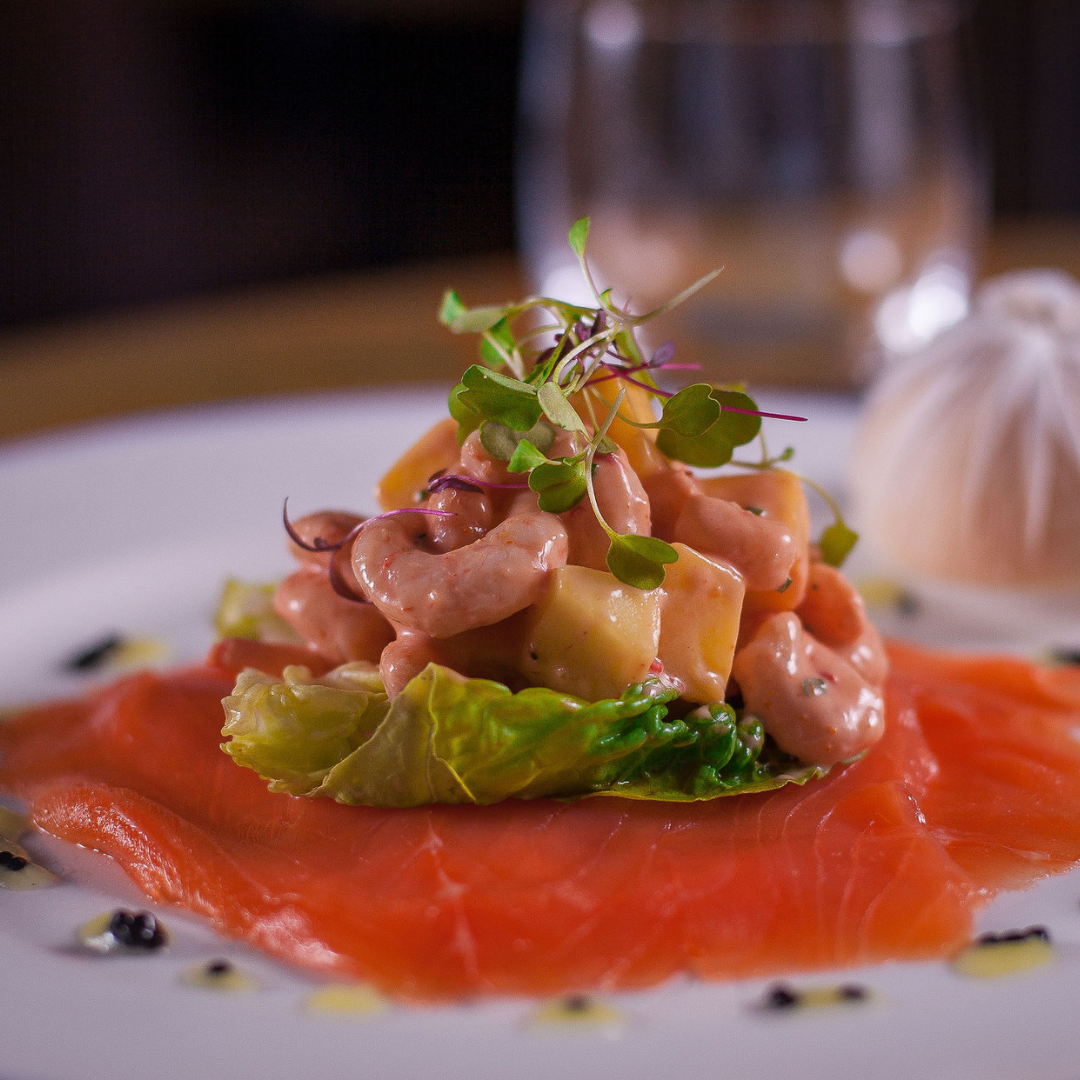Gamba: Best restaurant for lunch
Googling ‘places for lunch near me’ can be your road to befuddle-ville. So many options flying at you promising this and that when all you’re really looking for is first-class food in sumptuous surroundings and lunchtimes at Gamba are exactly that: Wednesday to Friday, 12noon – 2.00 pm, with 2 courses for only £28. Restaurants for lunch don’t have to be a once-in-a-blue-moon treat when it’s as reasonable as that, and as you know, we never stint on portions or quality.
The history of lunch is quite an interesting wee story so here it is, and you’ll be happy to hear that we’ve potted it for you.
Let there be lunch
From the Romans to the Middle Ages, everyone ate in the middle of the day, but it was called dinner and was the main meal of the day because lunch as we know it didn't exist – and there’s no trace of the word either.
It was all to do with light or lack of it.
During the Middle Ages daylight shaped mealtimes, because there was no artificial light. Our hard-working ancestors rose earlier to make the most of every last shaft of daylight, with many having toiled in fields from daybreak, so by midday, their tummies were rumbling, having worked up to six hours.
They would take a quick break and eat ‘beever’ or ‘noonshine’, and this consisted of mainly bread and cheese.
As the scientific revolution gave way to harnessing electricity to create artificial light during the late 17th and 18th centuries, dinner got shunted to later and later in the day for the wealthier, creating a great big chasm between breakfast and dinner.
And that’s when lunch became a thing.
Lunch is the word
It was by the 19th century and the Industrial Revolution that lunch morphed into what we know today.
Middle and lower-class eating patterns, still dictated by long working hours in factories, required sustenance, so a noon-time meal was essential.
Pies were sold on stalls outside factories, and this was when people started to rely on mass-produced food because there was no room in towns and cities for gardens with pig pens or vegetable patches, plus household kitchens were rare.
The word lunch was rarely used up until the 19th Century, and one theory is that it derived from the word ‘nuncheon’, an old Anglo-Saxon word meaning a quick hand-held snack, that was common parlance until around the late 17th Century.
Others say that it comes from the word ‘nuch’ meaning big hunk of bread, which was used around the 16th and 17th Centuries, or ‘nunchin’ meaning ‘noon drink.’
But it's the French custom of ‘souper’ in the 17th Century that helped shape what most of us eat for lunch today. It became fashionable among the British aristocracy to ape the French by eating a lighter evening meal.
The lunch hour
The ritual of taking lunch became ingrained in the daily routine in the 19th Century when chop houses (eateries where workers would go for lunch if they were at work, and also for dinner if there was no one to cook for them at home) opened in cities and office workers were finally given a lunch hour.
But when WW2 broke out in 1939, rationing forced lunch to evolve further, with work-based canteens becoming the most economical way to feed the masses.
The 1950s brought a post-War world of cafes and luncheon vouchers.
The Chorleywood Process, an innovative way of producing bread at the time, meant the humble loaf could be produced cheaper and swifter than ever, and that’s when the takeaway sandwich started to dominate our lunchtimes.
The dawn of the sandwich
Sandwiches are kind of synonymous with lunchtime but how dull to spend yours eating only them when Glasgow has a lunch menu like Gamba’s.
But where did the sandwich start its journey?
Most sandwich experts believe that it’s the Earl of Sandwich's famous late-night snack from the 1750s, and legend has it that he ordered his valet to bring him cold meats between some bread one evening. It’s as simple as that.
He could eat the snack with just one hand and wouldn't get grease on anything. Perhaps he was playing cards or working at his desk?
His friends took notice and asked for ‘the same as Sandwich’, and hey presto, the sandwich was born.
Should lunch be your biggest meal?
Should lunch be your biggest meal? Depends on your personal preference of course, but a study published in the American Journal of Clinical Nutrition found that a smaller dinner and larger lunch could be better for your health.
Food is energy and if you eat a big meal at dinner, common sense dictates that this energy has nowhere to go if you’re off to bed a few hours late. Eating more at lunch brings the boost you need to get through the rest of the day, lessening the likelihood of mid-afternoon slump.
A heartier lunch might keep your metabolism stoked up too, ensuring you're using all the energy from the food you consume, rather than in the evening when your metabolism slows down when you get tired and nod off.
By Jason Caddy
Sources:
justfunfacts.com
bbc.co.uk

